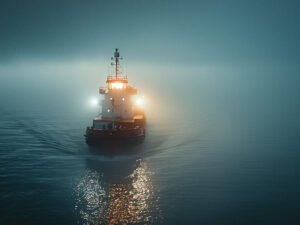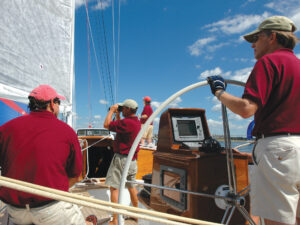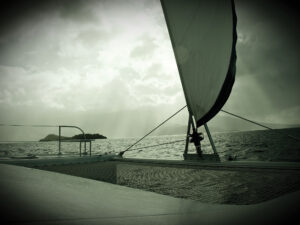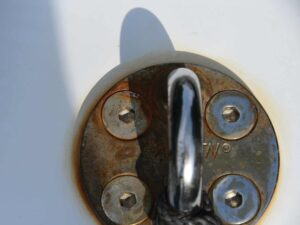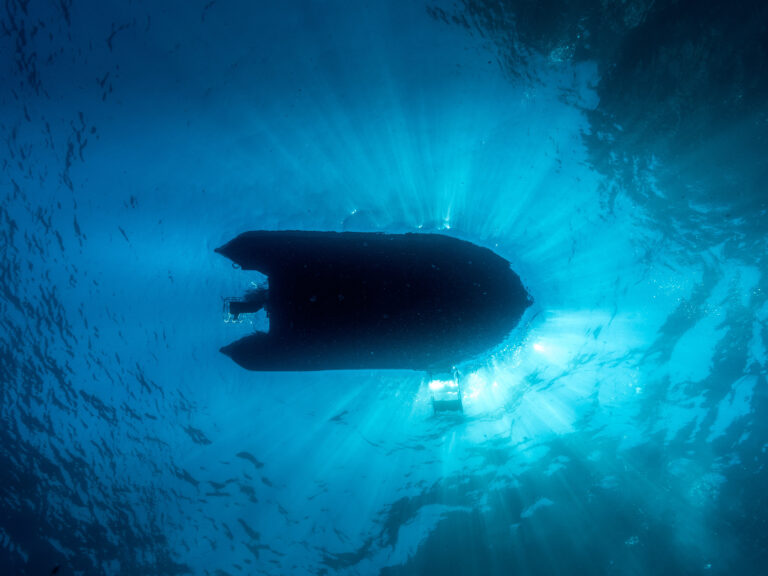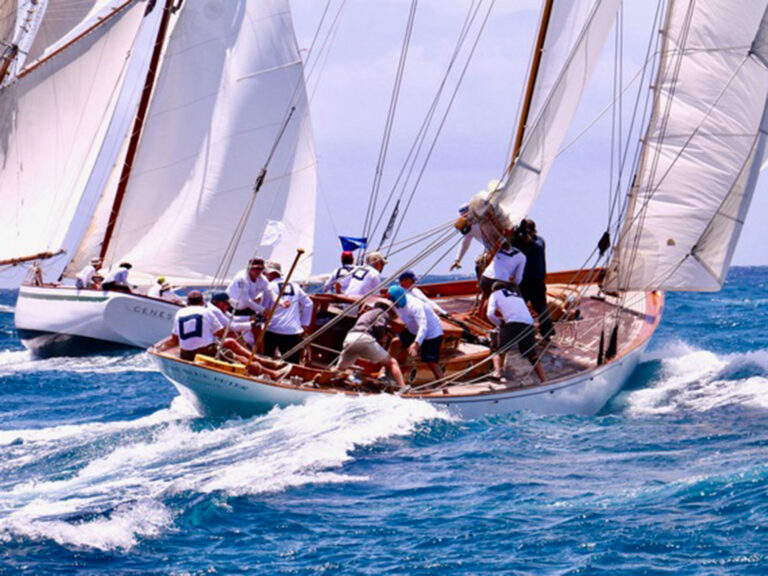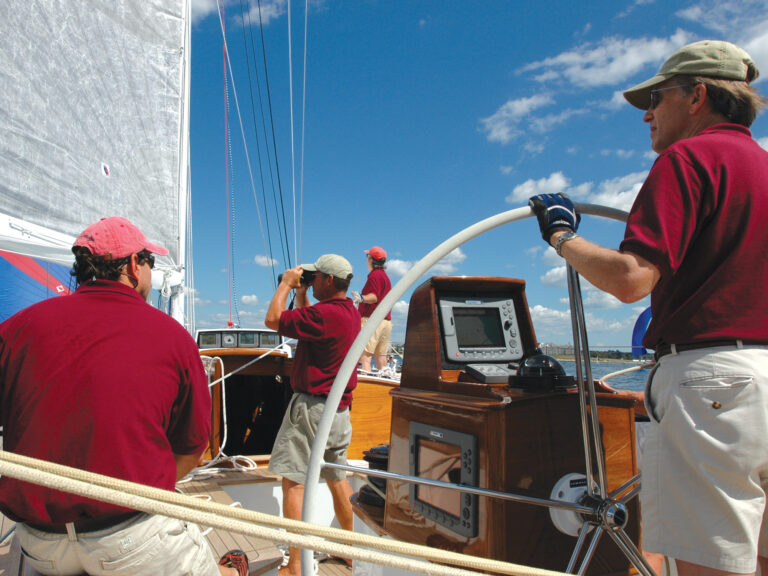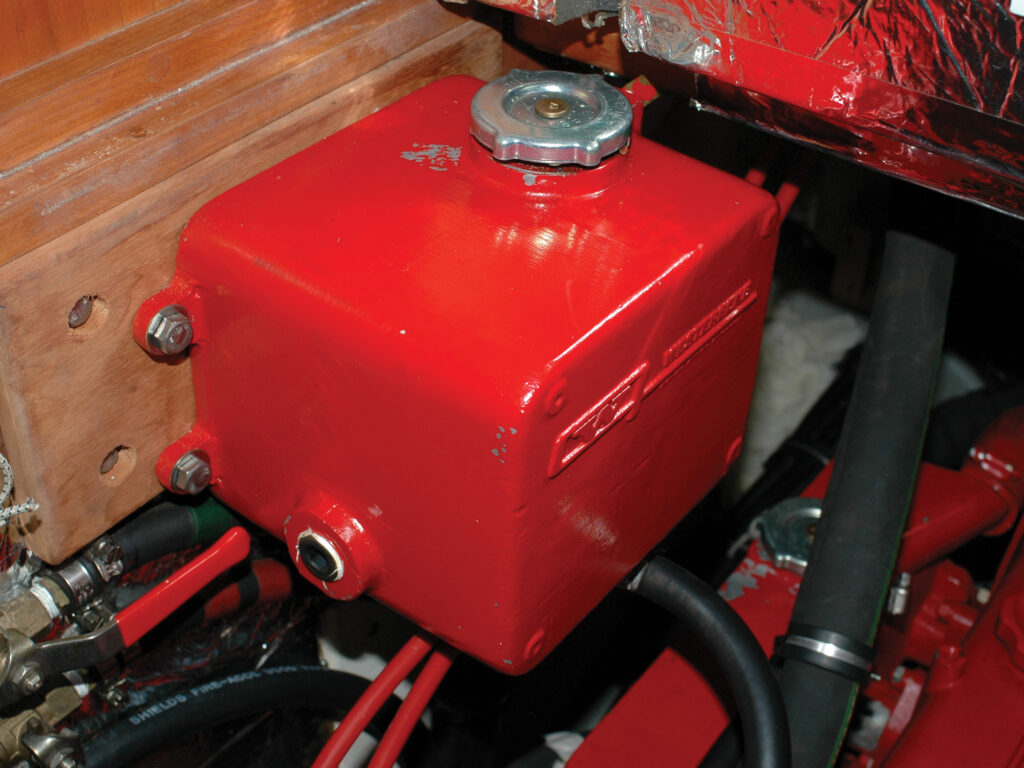
There is nothing better than the revitalizing effect of a hot shower after a cold, wet, windy watch. This is why I place such a high value on the reliability and efficiency of a vessel’s water heater.
Here are the key considerations for any boat’s hot-water heater to keep it running at its best.
Air
Closed engine-cooling systems, which circulate coolant rather than seawater through the block, are designed so that air will rise to the highest location: the pressurized expansion tank. This is where the pressure cap is installed, and should be the apex of this system.
However, if a water heater is plumbed to the engine and elevated so that its internal heat exchange is higher than the pressure cap, air will migrate into this plumbing. This will prevent the engine from efficiently providing domestic hot water.
Additionally, such a flawed installation means that opening the pressure cap—which you should do only when the engine is cold—results in overflowing coolant. Remote expansion tanks are available off the shelf, and adding one is relatively easy.
Temperature
If the engine is used to make domestic hot water, then it’s common for the water supplied by the water heater to become nearly as hot as the engine’s coolant—almost 200 degrees Fahrenheit, well beyond the range for scalding. For water heaters that are plumbed to engines, it is imperative to have tempering or mixing valves.
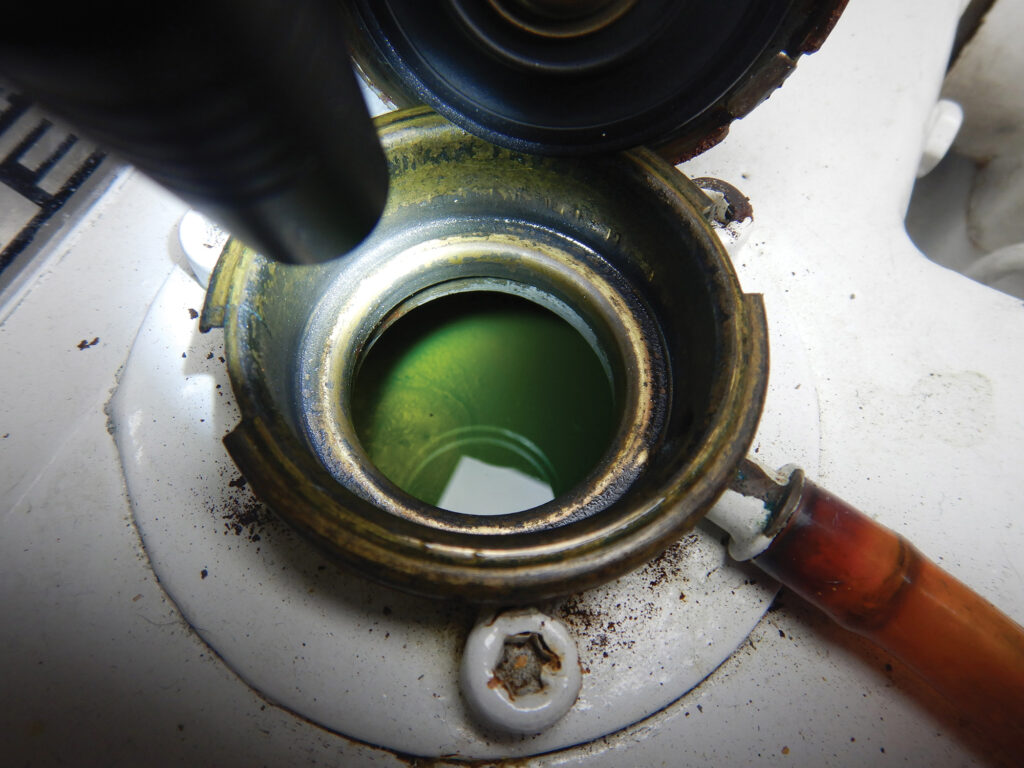
These valves thermostatically mix cold water with the hot water as it leaves the water heater, lowering the water to a safe temperature. The electric thermostat can be set higher on water heaters equipped with mixing valves, so this system also effectively provides more hot water.
If your engine-heated water heater is not equipped with a mixing valve, it can easily be added. American Boat & Yacht Council standards require the use of a tempering valve where water heaters are plumbed to engines.
Pressure
As water warms up within the heater, pressure increases. If this pressure becomes too high, the water heater can burst, in some cases, violently. For this reason, water heaters must be equipped with temperature and pressure-relief valves, known as T&P or TPR.
Not all TPR valves are created equal; those used on many household water heaters might allow up to 400 percent of nominal system pressure, while ABYC standards call for this threshold to be no more than 175 percent. Make sure yours meets the latter standard.
Because this valve can open unexpectedly, its outlet must be securely plumbed, typically to the bilge, where a discharge will not injure a nearby person. Some builders plumb this relief overboard. I prefer to avoid this approach because it makes identifying a leaking TPR difficult. If it is leaking, then you are dumping precious fresh water overboard.
Many water heaters are equipped with a check valve on the cold-water inlet. This serves two purposes. First, it prevents the water heater from inadvertently draining, thereby damaging the heating element (an unprotected heating element can burn out quickly). Second, it prevents hot water from backflowing into the cold-water system.
However, because there is less system volume into which the water can expand, once a check valve is installed, tank pressure can rear its head. Such a system should also be plumbed with an expansion or accumulator tank, either between the inlet and the check valve or on the outlet. This tank will allow water within the heater to expand without triggering the TPR valve.
Plumbing
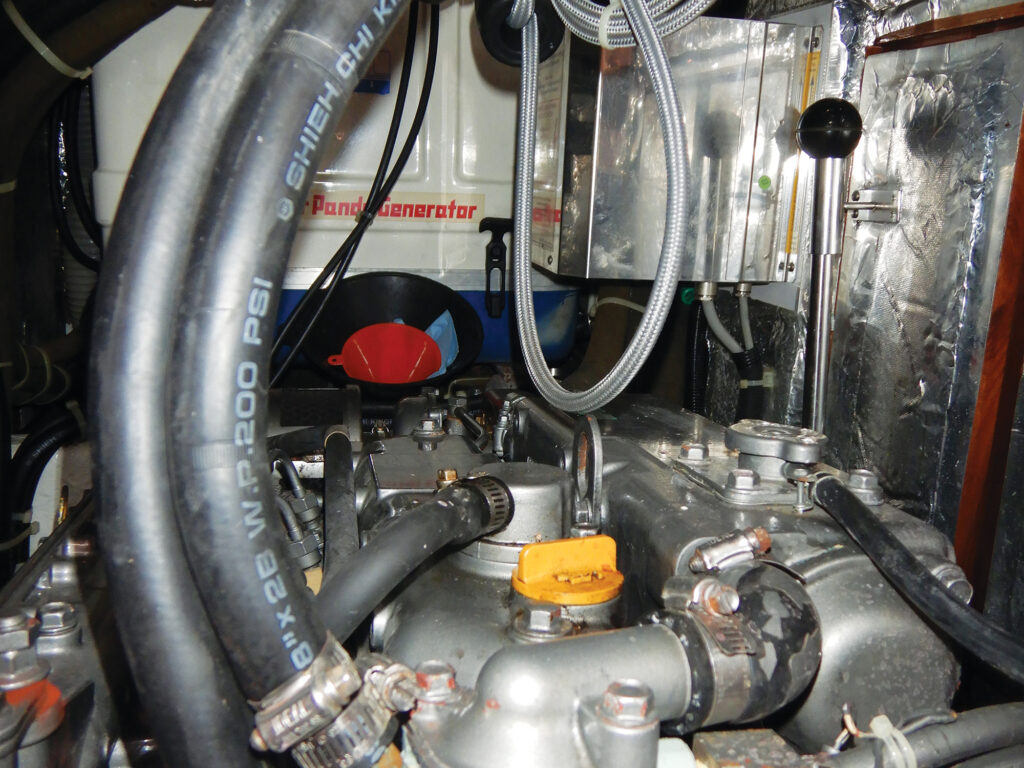
The hose used to plumb the water heater to the engine must be robust, as well as kink- and crush-resistant.
In the event of a hose failure, the engine will lose coolant and quickly overheat. At the very least, use “heater hose,” which is similar to what’s used for coolant on engines. This hose is neither kink- nor crush-resistant, though; a more durable alternative is SAE J2006 marine wet exhaust hose.
Finally, make certain that isolation valves are installed where water-heater plumbing connects to the engine. This will allow the water heater to be isolated in the event of a leak. —Steve D’Antonio •
Steve D’Antonio offers services for boat owners and buyers through Steve D’Antonio Marine Consulting.

